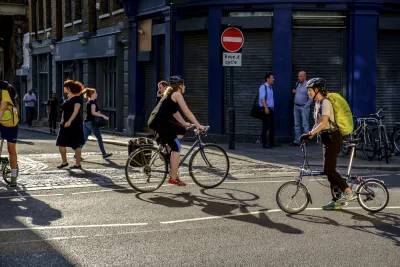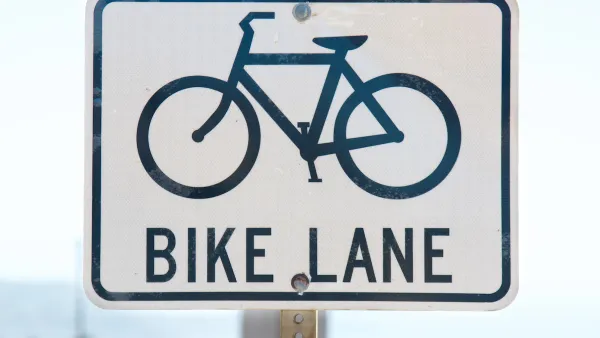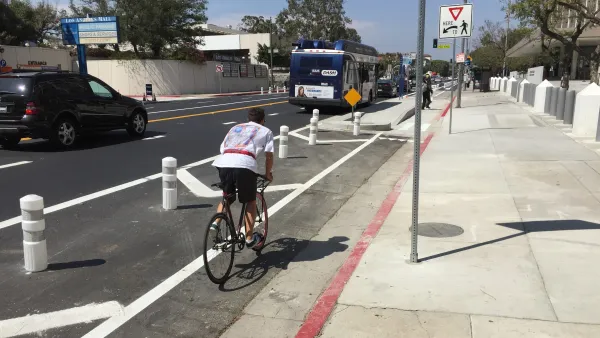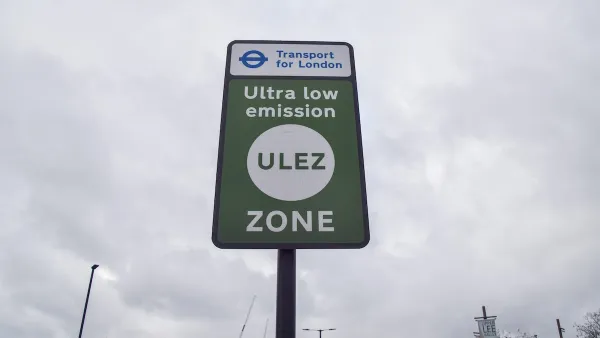Research from Europe shows bike infrastructure doesn't add to urban traffic and can shift mode share from cars to bikes and reduce the need for solo car trips.

Despite claims that cycle lanes added during the pandemic contributed to an increase in London's traffic congestion, research shows the city's traffic was largely the same in 2021 as in 2019, before the bike lanes were installed. David Metz reports that cycle lanes actually reduce the share of trips taken by car, which could diminish congestion as well. Thanks in part to aggressive measures taken by the city to discourage car trips, the use of private transport in London fell from 48 percent to 37 percent between 2000 and 2019.
"It’s important to note that creating cycle lanes reduces the space available for cars but does not necessarily get people out of cars. Copenhagen is a city famous for cycling, with 28 percent of journeys made by bike. Yet car traffic is only slightly less than in London." Meanwhile, residents of Copenhagen take only half as many public transit trips as Londoners. In fact, "there are no major European cities with high levels of both cycling and public transport. "
With revenues from public transit ridership drastically reduced by the pandemic, Metz writes, it is investments in cycling infrastructure that would "make the most sense for reducing car use in London."
FULL STORY: Why Cycle Lanes Aren’t Responsible for Urban Congestion

National Parks Layoffs Will Cause Communities to Lose Billions
Thousands of essential park workers were laid off this week, just before the busy spring break season.

Retro-silient?: America’s First “Eco-burb,” The Woodlands Turns 50
A master-planned community north of Houston offers lessons on green infrastructure and resilient design, but falls short of its founder’s lofty affordability and walkability goals.

Delivering for America Plan Will Downgrade Mail Service in at Least 49.5 Percent of Zip Codes
Republican and Democrat lawmakers criticize the plan for its disproportionate negative impact on rural communities.

Test News Post 1
This is a summary

Test News Headline 46
Test for the image on the front page.

Balancing Bombs and Butterflies: How the National Guard Protects a Rare Species
The National Guard at Fort Indiantown Gap uses GIS technology and land management strategies to balance military training with conservation efforts, ensuring the survival of the rare eastern regal fritillary butterfly.
Urban Design for Planners 1: Software Tools
This six-course series explores essential urban design concepts using open source software and equips planners with the tools they need to participate fully in the urban design process.
Planning for Universal Design
Learn the tools for implementing Universal Design in planning regulations.
EMC Planning Group, Inc.
Planetizen
Planetizen
Mpact (formerly Rail~Volution)
Great Falls Development Authority, Inc.
HUDs Office of Policy Development and Research
NYU Wagner Graduate School of Public Service





























